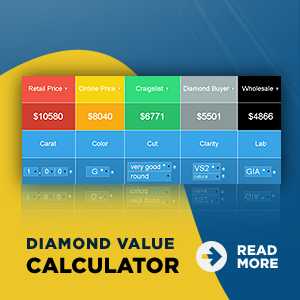
Opal is ranked at #5 to #6.5 on Mohs scale and very poor to fair in toughness. Sources are Australia—black and white opal, Brazil—white opal, and Mexico—fire opal.
Opal is the world’s most popular phenomenal gem. Many cultures have credited opal with supernatural origins and powers. Arabic legends say it falls from heaven in flashes of lightning. The ancient Greeks believed opals gave their owners the gift of prophecy and guarded them from disease. Europeans have long considered the gem a symbol of hope, purity, and truth. In fact, throughout most of history, opal has been regarded as the luckiest and most magical of all gems because it can show all colors. Once, it was thought to have the power to preserve the life.
Opals had been divided into into many different categories, four of the main types are:
-Black opal-translucent to opaque with play of color against a black or other dark bodycolor. The industry supply of fine black opal is extremely limited.
-White opal- translucent to semitranslucent with play of color against a white or light gray bodycolor. White opals are generally available in a wide range of sizes.
-Boulder opal-translucent to opaque with play of color against a light to dark background. Host-rock fragments, or matrix, are part of the finished gem
-Fire opal-translucent to translucent with brown, yellow, orange, or red bodycolor. This material which often doesn’t show play of color is also known as Mexican opal, Gold opal, or Sun opal. Fire opals are available in a wide range of sizes just like white opals.

Tourmaline is ranked #7 to 7.5 on the Mohs scale and has fair in toughness. Sources are Afghanistan, Brazil-major source, Kenya, Madagascar, Mozambique, Myanmar, Namibia, Pakistan, Russia, and United States.
People have probably used tourmaline as a gem for centuries, but until the development of modern mineralogy, they identified it as some other stone(ruby, sapphire, emerald, and so forth) based on its color. Portuguese explorers discovered deposits of green tourmaline in Brazil in the mid 1500s, but they thought it was emerald. The confusion about the stone’s identity is even reflected in its name, which comes from toramalli, which means “mixed gems” in Sinhalese (a language of Sri Lanka).
In the late 1800s, tourmaline became known as an American gem through the efforts of Tiffany gemologist George F. Kunz. He wrote about the tourmaline deposits of Maine and California, and praised the stones they produced. The supply of tourmaline began to expand during the first half of the twentieth century, when Brazil yielded some large deposits. Then in the beginning of the 1950s, additional finds appeared in countries around the world.
Tourmalines come in a wide variety of cool exciting colors. In fact, tourmaline has one of the most and widest color ranges of any gem species. It occurs in various shades of almost every hue, and there are a number of trade names for its color varieties:
*Rubelitte->pink, red, purple red, orangy red, or brownish red.
*Indicolite->dark violetish blue, blue, and greenish blue.
*Paraiba tourmaline->intense violetish blue, greenish blue, or blue from the state of Paraiba, Brazil. This Paraiba tourmaline was discovered in 1988.
*Chrome tourmaline->intense green. Much of this colored by vanadium, the same element that colors many Brazilian and African emeralds.
* Parti-colored tourmaline->tourmaline with more than one color. One of the most common combinations is green and pink, but many others are possible.
* Watermelon tourmaline->pink in the center and green around the outside. Crystals of this material typically have a pink core surrounded by green, and they are cut in slices. Some tourmalines also show chatoyancy. Cat’s-eye tourmalines are most often green, blue, or pink, with an eye that’s softer and more diffused than the eye in fine cat’s eye chrysoberyl. (above pear shape picture is Paraiba tourmaline).

Rose zircon is #6 to 7.5 on the Mohs scale and has a fair to good toughness, yet it’s brittle and therefore sensitive to knocks and pressure , and can be easily abraded. Sources are Australia, Cambodia, China, Sri Lanka, Burma, Thailand, Vietnam.
Zircon indeed one of the most classic colored stones used in gemstone rings. The brighter deeper rose colored Rose Zircon gives an alternative to tourmaline in both price and perfection of crystalline structure. Zircon is a compound of oxides silicon and zirconium and fairly hard to be faceted to brilliant luster. Zircon has a high refractive index and strong dispersion and has great brilliance and intensive fire. The luster is vitreous to a brilliant sheen. Attractive Rose Zircon is available in a faint pink to a dark medium rose hue.

























